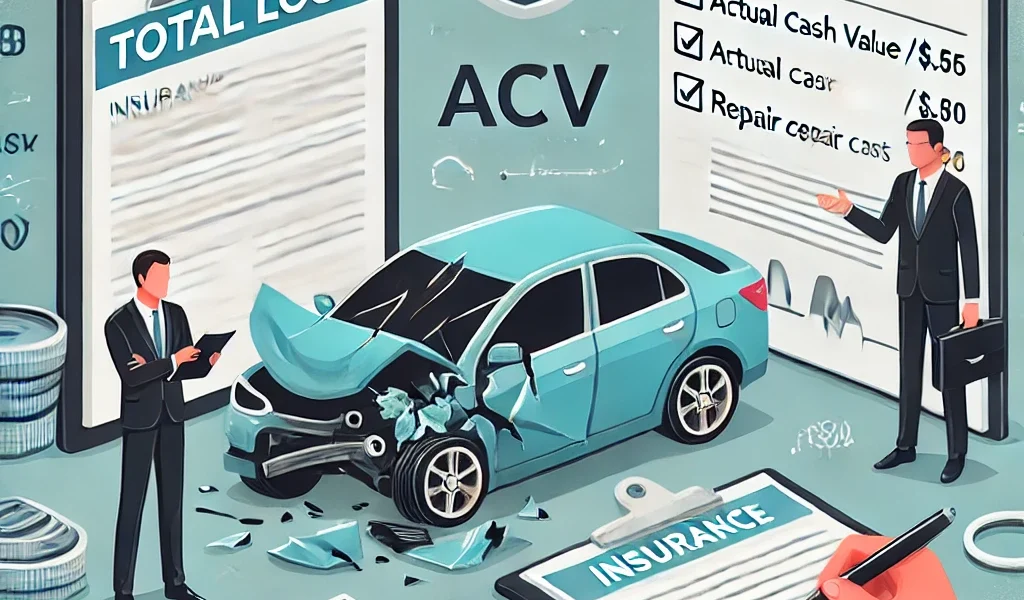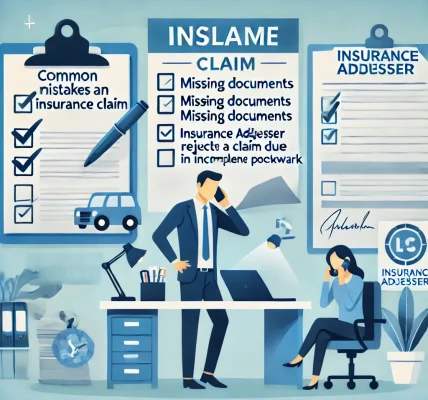When a vehicle or property sustains severe damage due to an accident, natural disaster, or unforeseen circumstances, an insurance company may declare it a total loss. Understanding how total loss claims work and how insurers determine the value of your damaged asset is crucial to ensuring a fair settlement. This guide will walk you through everything you need to know about total loss claims and how to navigate the process effectively.
1. What Is a Total Loss Claim?
A total loss claim occurs when the cost to repair a damaged vehicle or property exceeds its actual cash value (ACV), or when the damage is so severe that repairs are not feasible or safe.
1.1 Types of Total Loss Claims
- Vehicle Total Loss: Declared when a car is damaged beyond economical repair.
- Property Total Loss: Applies to homes and other properties deemed irreparable due to disasters such as fire or floods.
1.2 How Do Insurers Define Total Loss?
- Total Loss Threshold (TLT): If repair costs exceed a certain percentage (typically 70-80%) of the asset’s ACV, it is deemed a total loss.
- Total Loss Formula (TLF): Some insurers use a formula that adds repair costs and salvage value; if the sum exceeds ACV, it is declared a total loss.
2. How Insurers Determine the Value of a Total Loss
2.1 Actual Cash Value (ACV) vs. Replacement Cost Value (RCV)
- ACV: The market value of your asset before the loss, minus depreciation.
- RCV: The cost of replacing the asset with a new one, without considering depreciation.
2.2 Factors That Influence ACV Calculation
- Age and condition of the asset
- Market value of similar assets
- Mileage (for vehicles)
- Previous damages and maintenance history
2.3 Salvage Value & Its Impact
- Salvage value is the estimated worth of the damaged asset if sold for parts or scrap.
- Insurers deduct salvage value from the settlement amount if the policyholder retains the damaged asset.
3. The Total Loss Claim Process
3.1 Reporting the Claim
- Notify your insurance provider immediately.
- Provide necessary details such as accident reports, photos, and witness statements.
3.2 Inspection & Damage Assessment
- An adjuster inspects the damaged vehicle/property to determine the extent of loss.
- A repair estimate is prepared and compared with the ACV to decide if the asset qualifies as a total loss.
3.3 Settlement Offer
- If declared a total loss, the insurer offers a payout based on the ACV.
- Policyholders can accept the offer, negotiate, or dispute the valuation.
3.4 Vehicle/Property Ownership & Salvage Options
- If you accept the settlement: The insurer takes ownership of the damaged asset.
- If you keep the asset: A salvage deduction is applied to the payout, and you may need to get a salvage title (for vehicles).
4. Common Challenges & How to Overcome Them
4.1 Low Settlement Offers
- Compare the insurer’s offer with market values.
- Provide additional evidence (maintenance records, comparable listings) to support a higher valuation.
4.2 Disputing the Insurer’s Valuation
- Request an independent appraisal.
- Consult a lawyer or mediator if negotiations stall.
4.3 Understanding Policy Coverage & Deductibles
- Review your policy to check for coverage limits and exclusions.
- Ensure deductible amounts are accounted for in your final payout.
5. Tips to Maximize Your Total Loss Settlement
5.1 Maintain Accurate Records
- Keep receipts for upgrades, maintenance, and repairs.
- Document your asset’s condition regularly with photos.
5.2 Research Market Values Before Accepting an Offer
- Use online valuation tools (e.g., Kelley Blue Book for vehicles, real estate market reports for homes).
- Compare with recent sale prices of similar assets.
5.3 Negotiate with Confidence
- Be prepared with evidence to justify a higher settlement amount.
- Request a detailed breakdown of how the insurer calculated ACV.
Final Thoughts
Total loss claims can be complex, but understanding the valuation process, knowing your rights, and preparing adequately can help you secure a fair settlement. Always review your insurance policy thoroughly, document your asset’s condition, and don’t hesitate to negotiate if the settlement offer seems unfair.
If you need further assistance in handling total loss claims, consult a professional adjuster or legal expert to ensure you get the best outcome from your claim.



